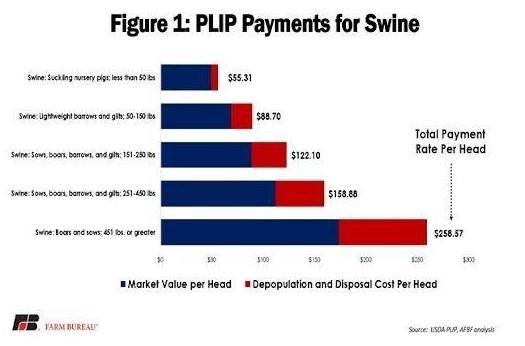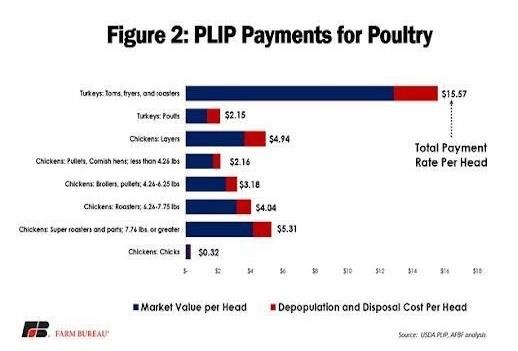USDA on Tuesday released the highly anticipated details of its new Pandemic Livestock Indemnity Program (PLIP) for producers who suffered losses from supply chain disruptions caused by COVID-19. Producers who were forced to depopulate animals last year due to insufficient processing capacity can apply for PLIP now through Sept. 17 via USDA’s application portal.
Program Details
PLIP provides assistance for losses of livestock and poultry depopulated from March 1, 2020, through Dec. 26, 2020. The animals must have been euthanized due to insufficient processing access that occurred as a result of the COVID-19 pandemic. PLIP payments compensate participants for 80% of the loss of eligible livestock or poultry as well as for the cost of depopulation and disposal. This will occur through a single payment rate per head listed in the following figures.


PLIP payments are calculated by multiplying the number of head of eligible animals by the payment rate per head, and then subtracting the amount of payments the producer has already received for disposal of the animals under USDA’s Environmental Quality Incentives Program (EQIP) or state programs. If Coronavirus Food Assistance Program 1 or CFAP2 payments have already been paid on depopulated swine, those payments will be subtracted from the payment as well.
PLIP Payment = [Payment Rate/hd X Number of animals depopulated] – Previous Payments
In order to simplify administration of the program, USDA’s Farm Service Agency (FSA) determined a single payment rate per head that is consistent with the categories and nationwide prices used to administer the Livestock Indemnity Program for 2020. Additionally, the estimated cost of depopulation is factored in based on the average costs of common methods used as estimated by USDA’s Animal and Plant Health Inspection Service. The estimated cost of disposal is also factored in and is based on the costs of common disposal methods and rates from EQIP.
Click here to see more...